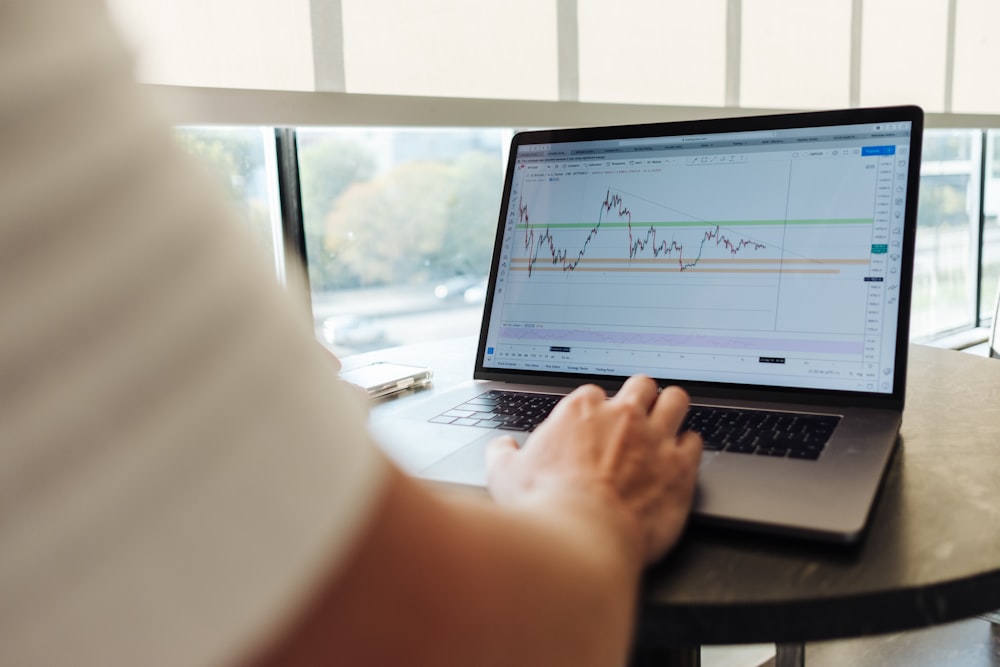When Momentum Trips Over Its Own Feet
Image Source: Unsplash
Every rally carries its own mythos, and for months now, the market’s story has been a familiar one — effortless momentum, AI euphoria, and a Federal Reserve that seemed content to underwrite the risk binge. But somewhere between stretched valuations and the creeping realization that Powell’s team isn’t ignoring inflation, the music faltered. The once-unstoppable melt-up finally caught its shoe on the curb, and what began as a stumble in New York is now echoing through Asia’s early morning tape.
Futures in Tokyo, Sydney, and Hong Kong all pointed lower as Friday dawned, a clear sign that traders were taking no chances after a night of wobbly price action in U.S. equities. The Nasdaq managed to salvage the session on a late-day Microsoft (MSFT) headline — “data center crunch to persist into 2026” — that offered more smoke than substance but just enough sizzle to keep the AI faithful from panicking. For everyone else, the message was simpler: the higher you fly on momentum, the thinner the oxygen gets.
Valuations have reached what even seasoned veterans quietly call “nosebleed territory.” The S&P’s relentless march has left multiples stretched across sectors, and with the Fed minutes underscoring that officials remain uneasy about inflation — even as they cut rates — traders may also be confronting the awkward truth that policy may not stay friendly forever. The dollar’s surge to a two-month high was another warning flare. Bonds were sold despite strong foreign demand for the 30-year auction, gold and oil both pulled back, and even crypto joined the rout. What momentum was built over the past six weeks can just as easily be taken away.
There’s an emerging feel that markets are subtly hedging against negative surprises. The Bureau of Labour Statistics hinting that the CPI release could drop before the month's end only sharpened that sense. Inflation has crept back into the conversation just as traders were settling into a comfort zone of “soft landing forever.” It’s the kind of late-cycle nervousness that makes desks twitchy — not quite panic, but a collective glance toward the exits to make sure the doors aren’t locked.
The positioning data tells its own story. Macro hedge funds, by JPMorgan’s count, remain cautiously postured. Their equity beta — a proxy for risk appetite — is still modestly negative, though it’s been creeping higher. Speculative positioning in U.S. equity futures sits near long-term medians, not frothy, but far from defensive. In other words, there’s dry powder, but conviction is fragile. Everyone wants to stay long, but no one wants to be the last one holding the bag when the music stops.
That explains why the dips are still being bought — just more nervously now. The AI capex theme, that once-in-a-generation structural story, continues to act as the market’s security blanket. Traders keep returning to it every time momentum stutters. The Microsoft headline reinforced the idea that hyperscaler demand isn’t going anywhere. Indeed, we’ve reached the point where AI is no longer a trade; it’s a reflex. That reflex still has power, but it’s starting to look mechanical.
Across other assets, the mood wasn’t much better. Crude retraced its recent climb as positioning flipped from bullish to balanced. Bitcoin chopped lower in sympathy with tech. The yen logged its biggest weekly loss in a year, despite Japan’s new LDP leader Sanae Takaichi insisting she doesn’t favor an “excessively weak” currency — a statement that markets promptly ignored. The USD/JPY carry remains the go-to liquidity tap for global speculation, and as long as the Fed-BoJ policy gap yawns this wide, that trade remains too tempting for fast money to resist.
Elsewhere, Washington’s fingerprints were back on global FX screens after the U.S. rushed $20 billion to Argentina to stabilize its collapsing peso — a rare, almost Cold-War-era-style intervention meant to halt contagion before it spread. It didn’t move markets much, but it added another layer of late-cycle tension to a global macro picture already crackling with fragility.
Even domestically, the U.S. political calendar has turned from background noise into potential tail risk. A government shutdown looms once again, and while traders have grown desensitized — the average closure since 1976 has lasted only about eight days — this time carries a sharper edge. President Trump’s renewed push to repeal Obamacare pits him directly against Democratic resistance, and with 20 million Americans relying on ACA subsidies, the optics are volatile. Should the standoff escalate into layoffs rather than furloughs, the knock-on effects to labor data and consumer confidence could ripple into Q4 earnings. Markets are barely pricing that possibility.
Nevertheless, the equity story remains remarkably resilient. The U.S. economy continues to perform well, and corporate earnings — especially from the AI giants — remain strong enough to support, if not entirely justify, current valuations. Still, a dip here wouldn’t be surprising as traders book profits as a natural course of business.. However, it doesn’t necessarily mean the bull run is over. In trader terms: the market might pause, not collapse.
However, that doesn’t mean investors should become complacent. The Fed’s “insurance cut” experiment, the labor market wobble, the overreliance on tech’s profit engine — all these form a fragile lattice holding up an enormous tower of risk. History tells us markets rarely fall because of what’s visible; they trip on the cracks nobody’s looking at.
So yes, Asia’s getting passed the baton from Wall Street this morning — but it’s not a polished handoff. It’s a slippery relay in the rain, and every runner knows that even when the crowd’s still cheering, the baton can tumble. Momentum may have only stumbled for now, but the track’s getting slicker by the hour.
More By This Author:
The Market’s Teflon March: When Momentum Becomes Religion
The Party Isn’t Over - But Oracle Just Dimmed The Lights
The Case For Gold: When The World Runs On IOUs




